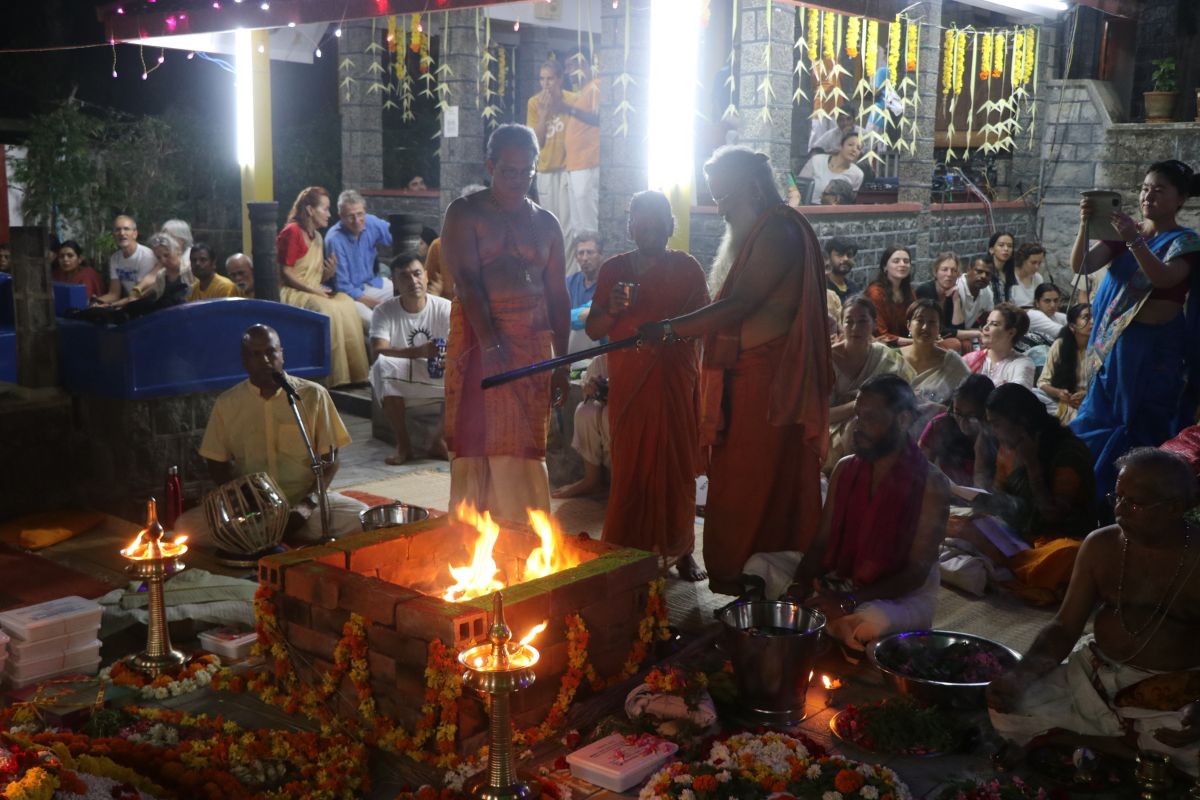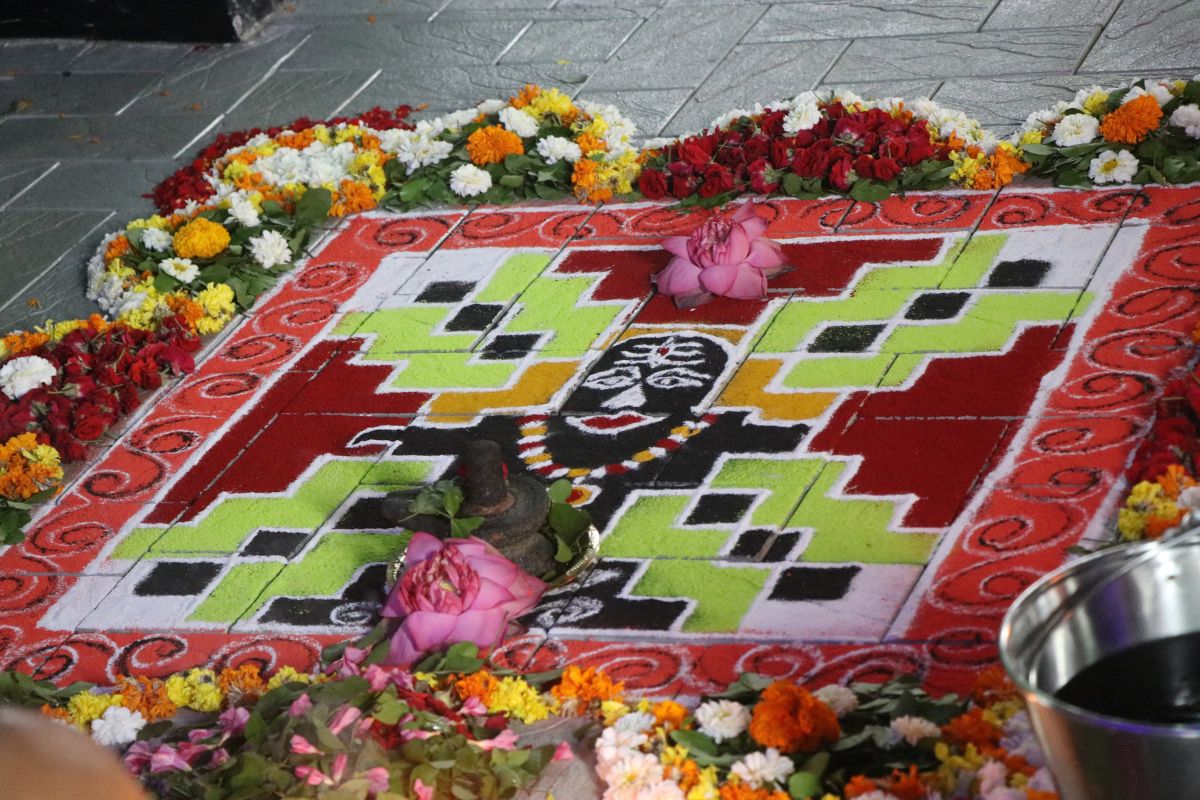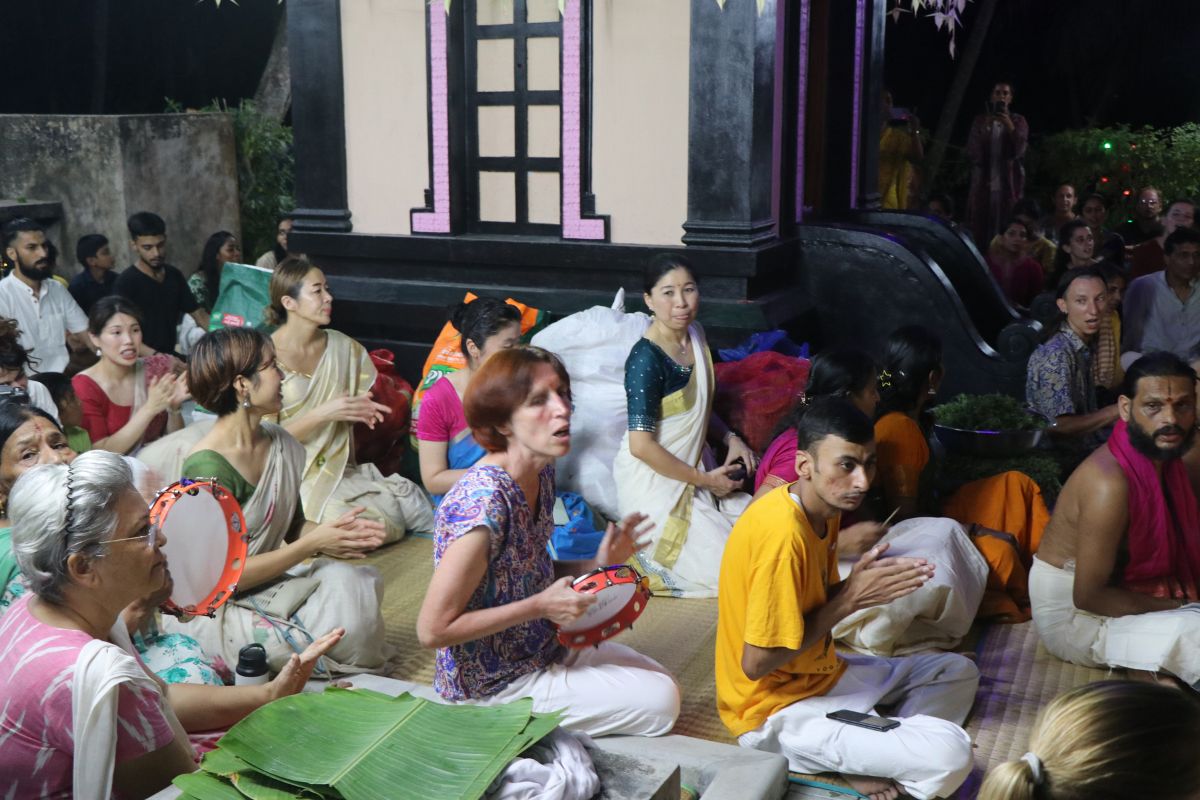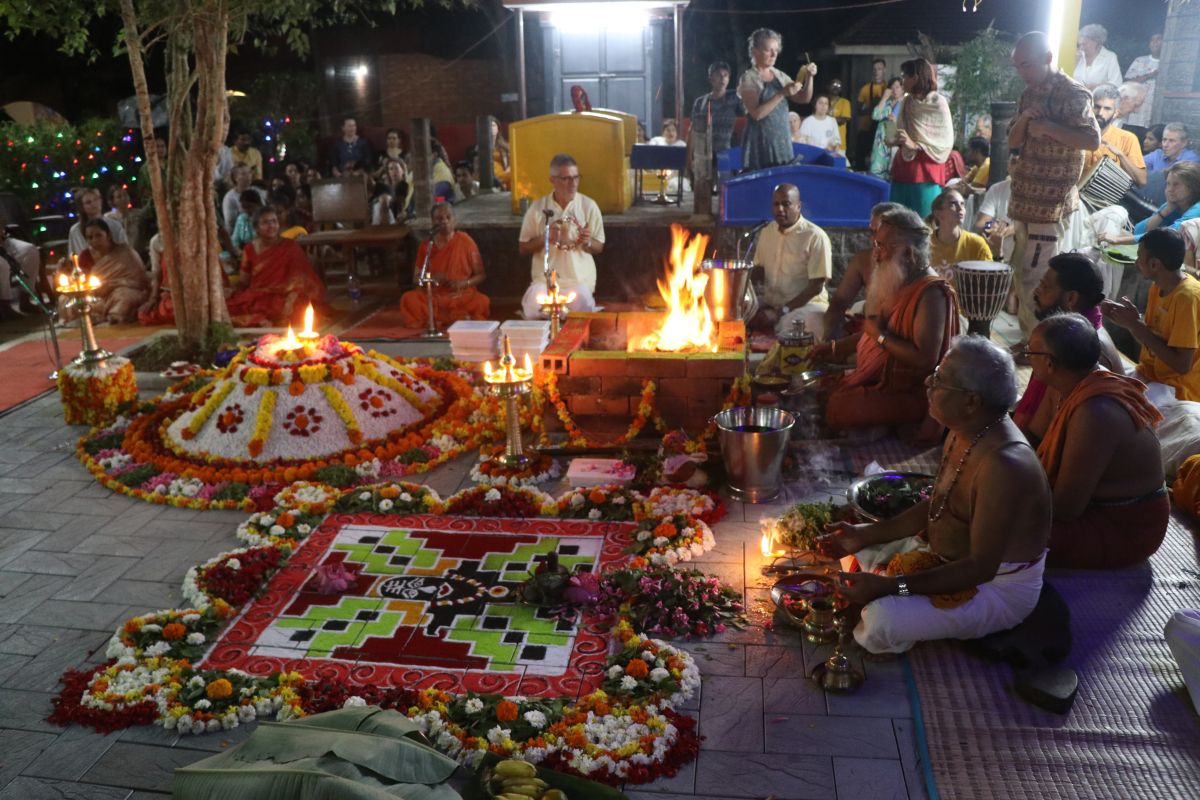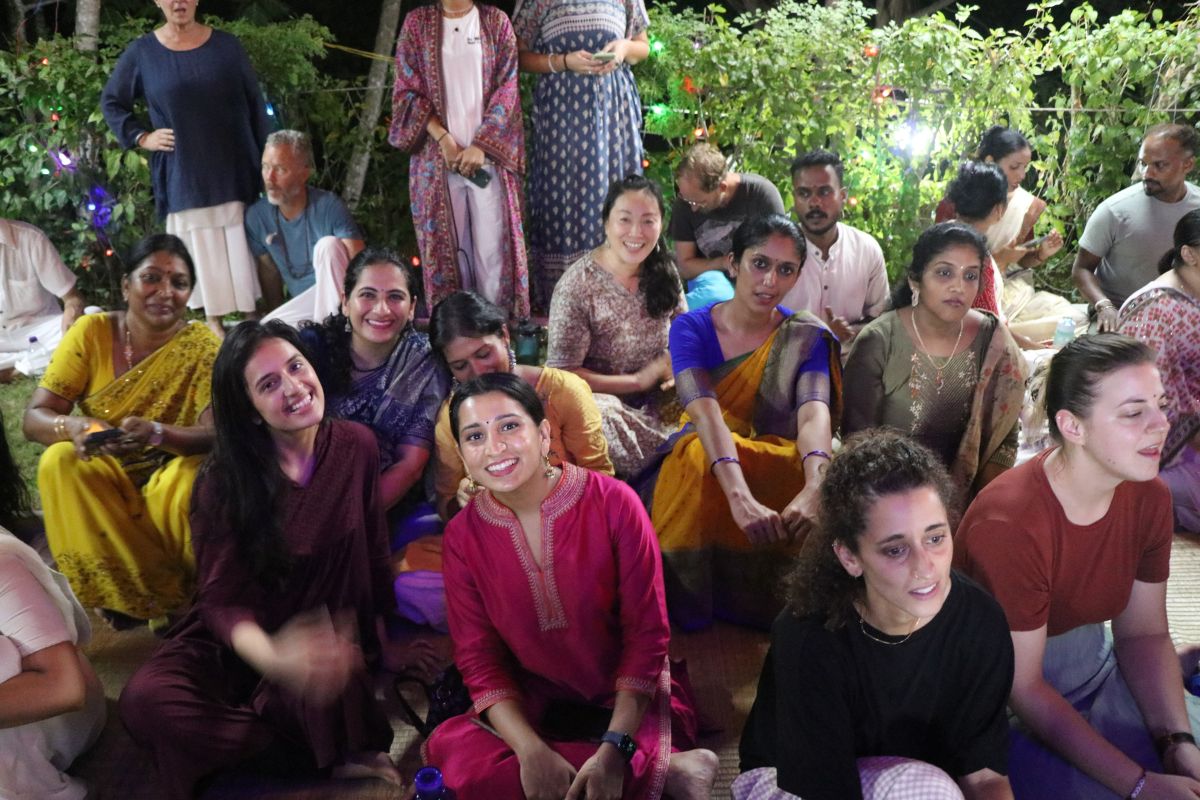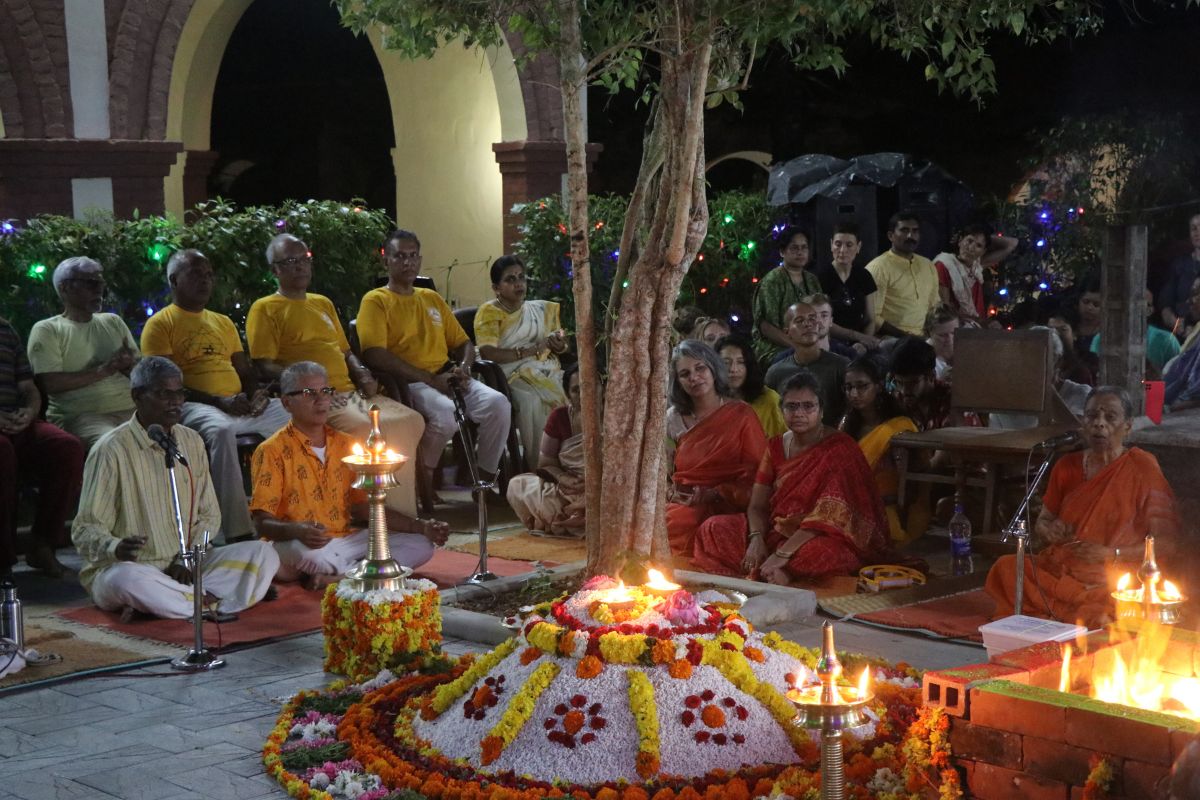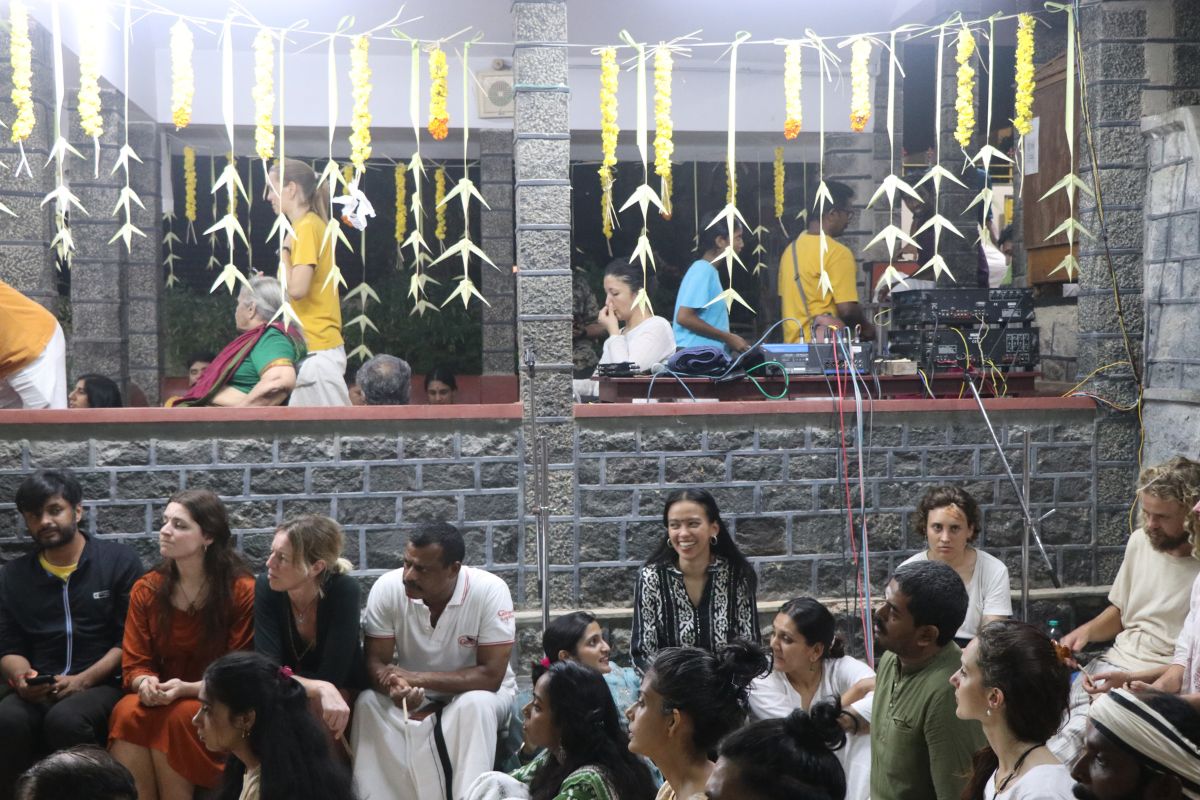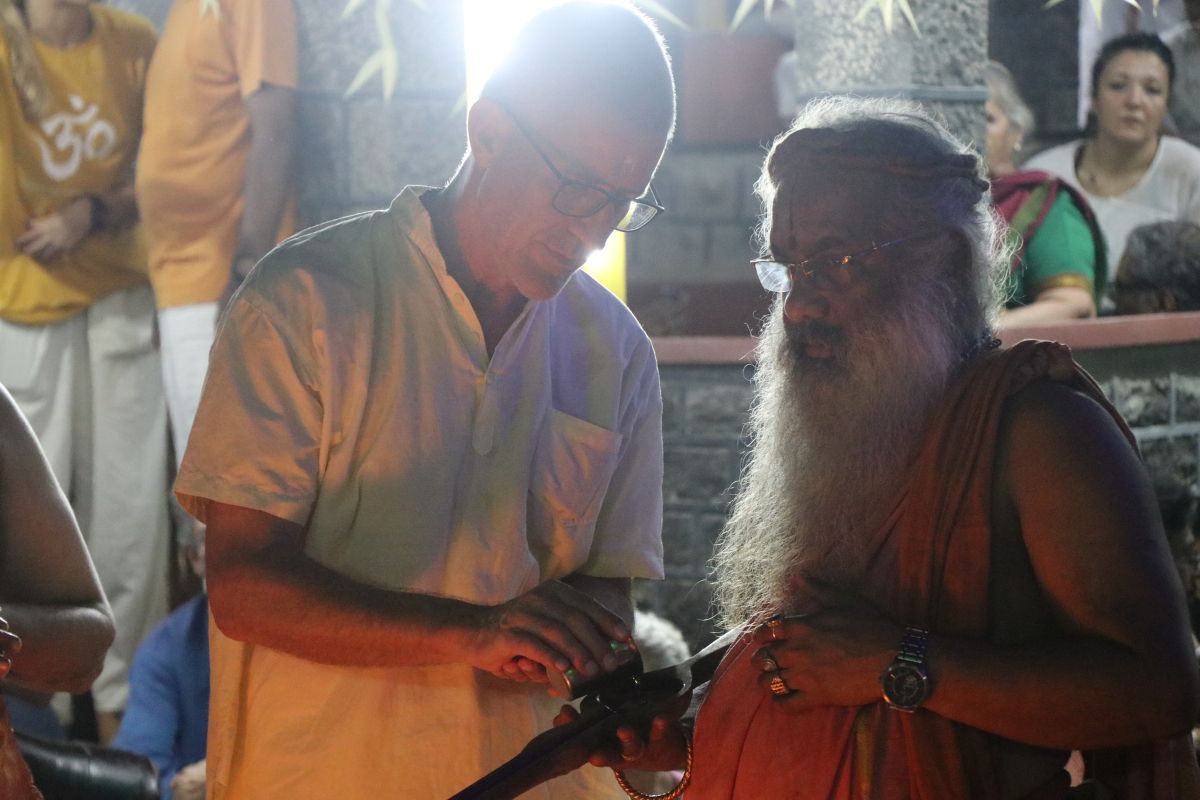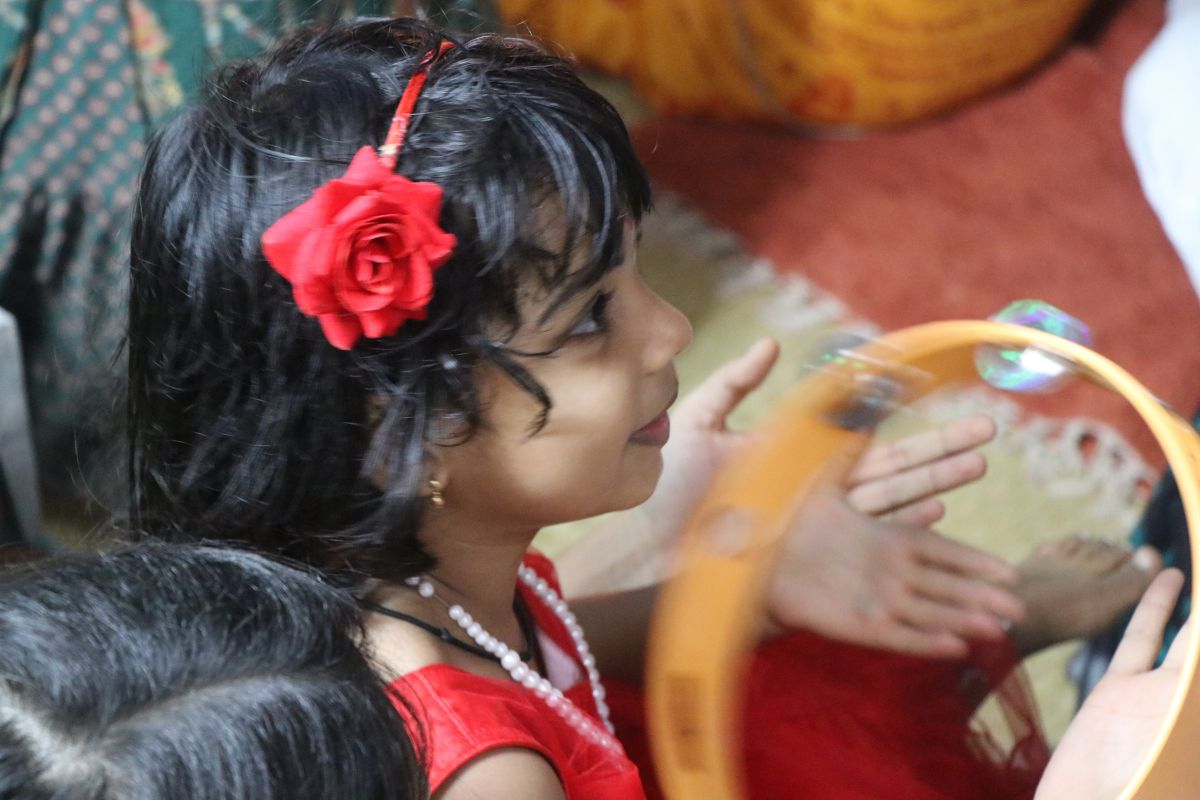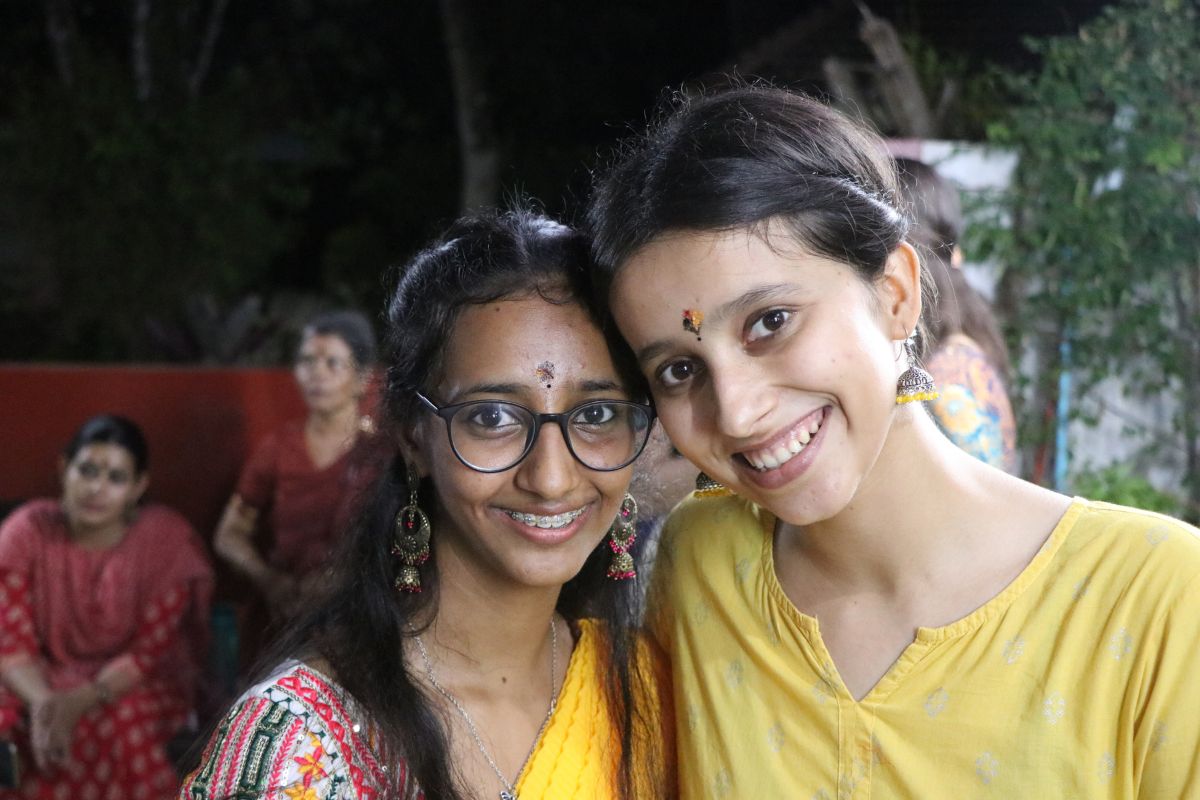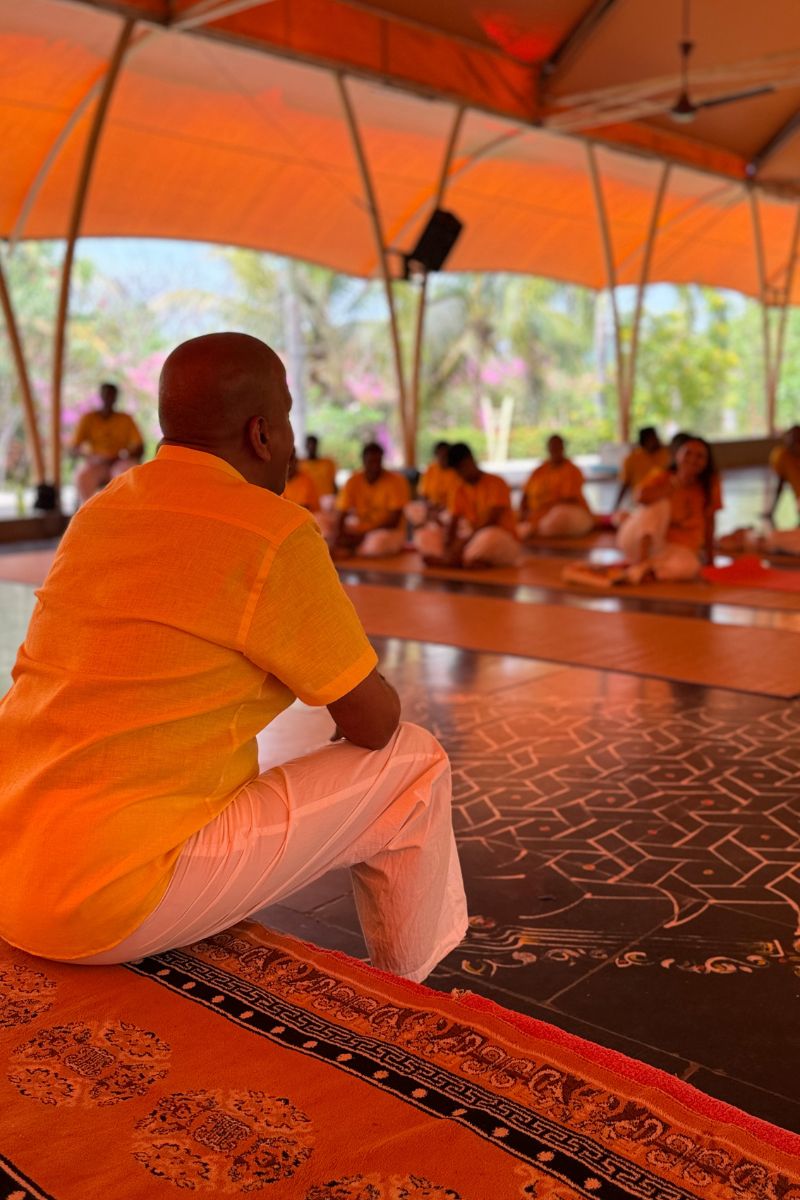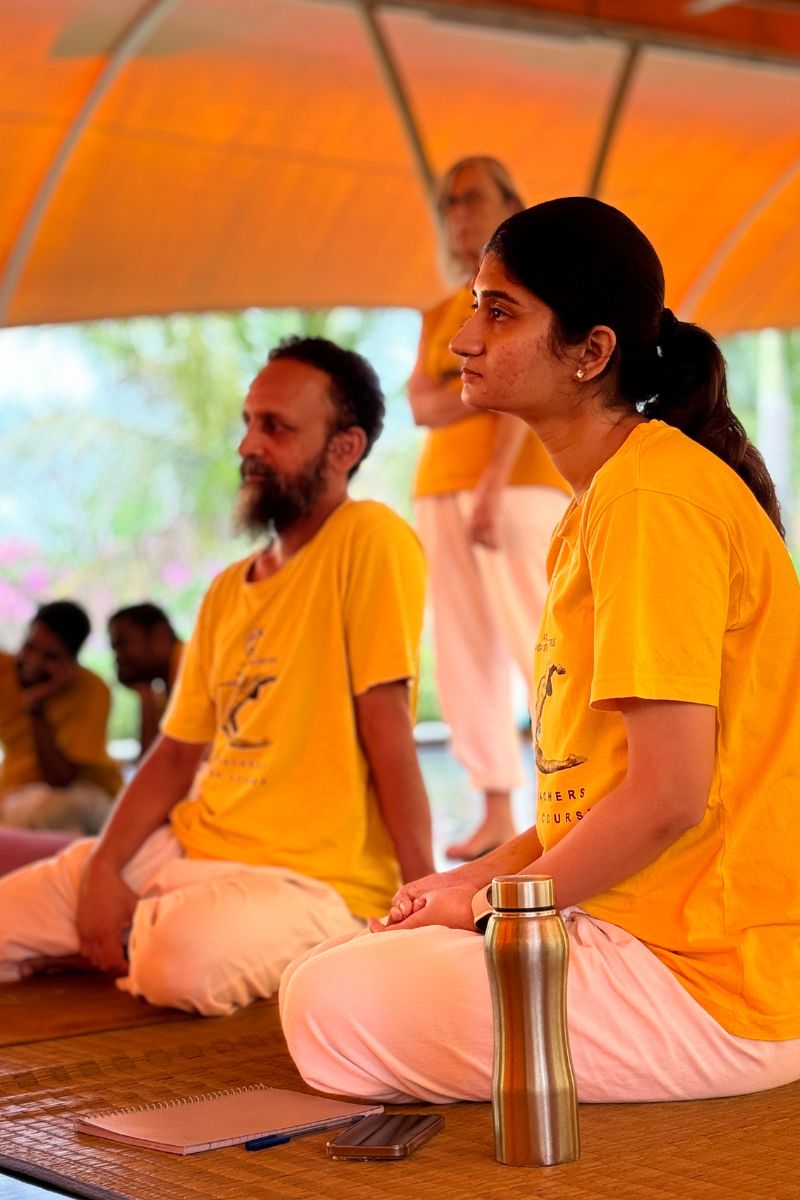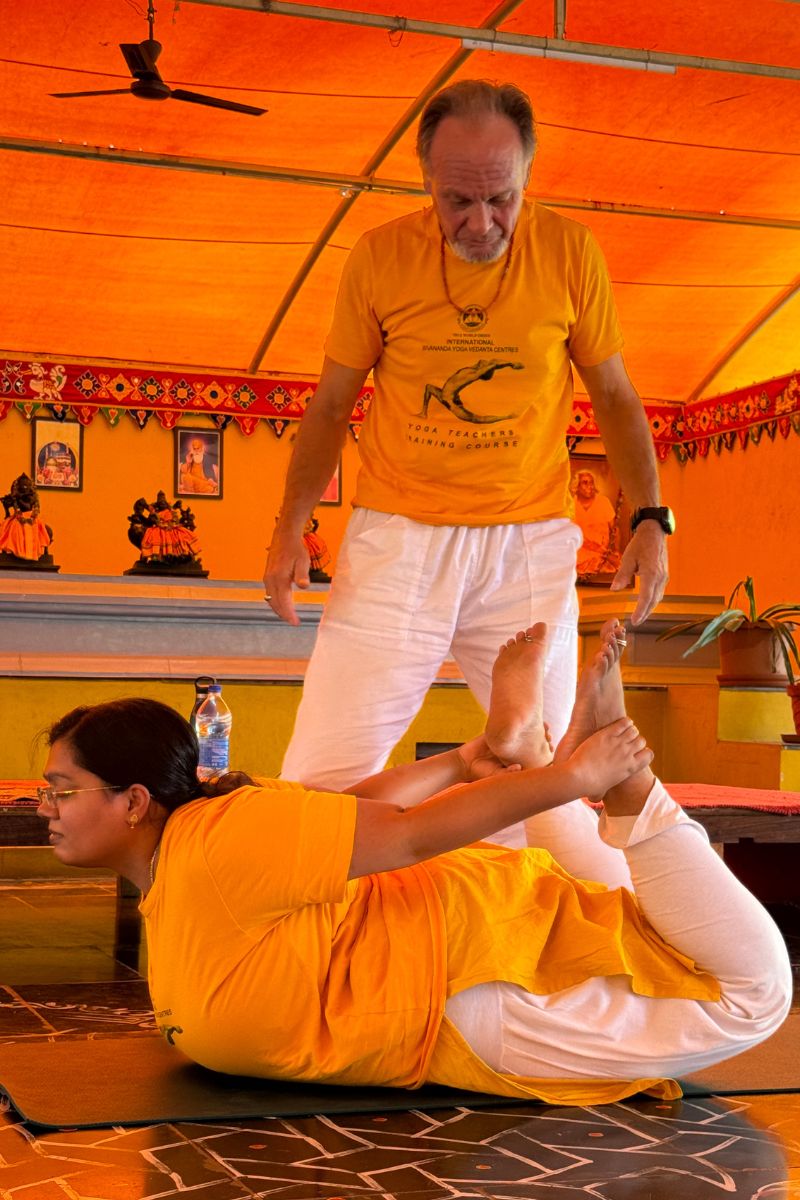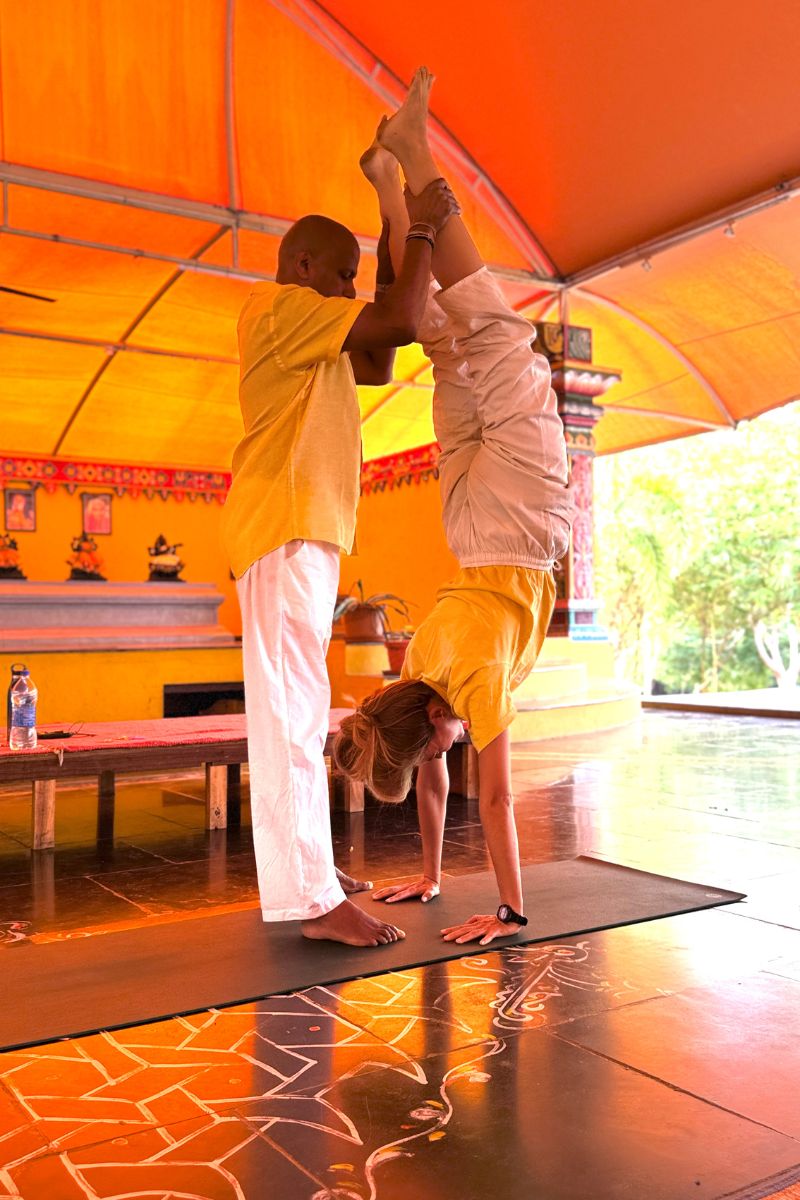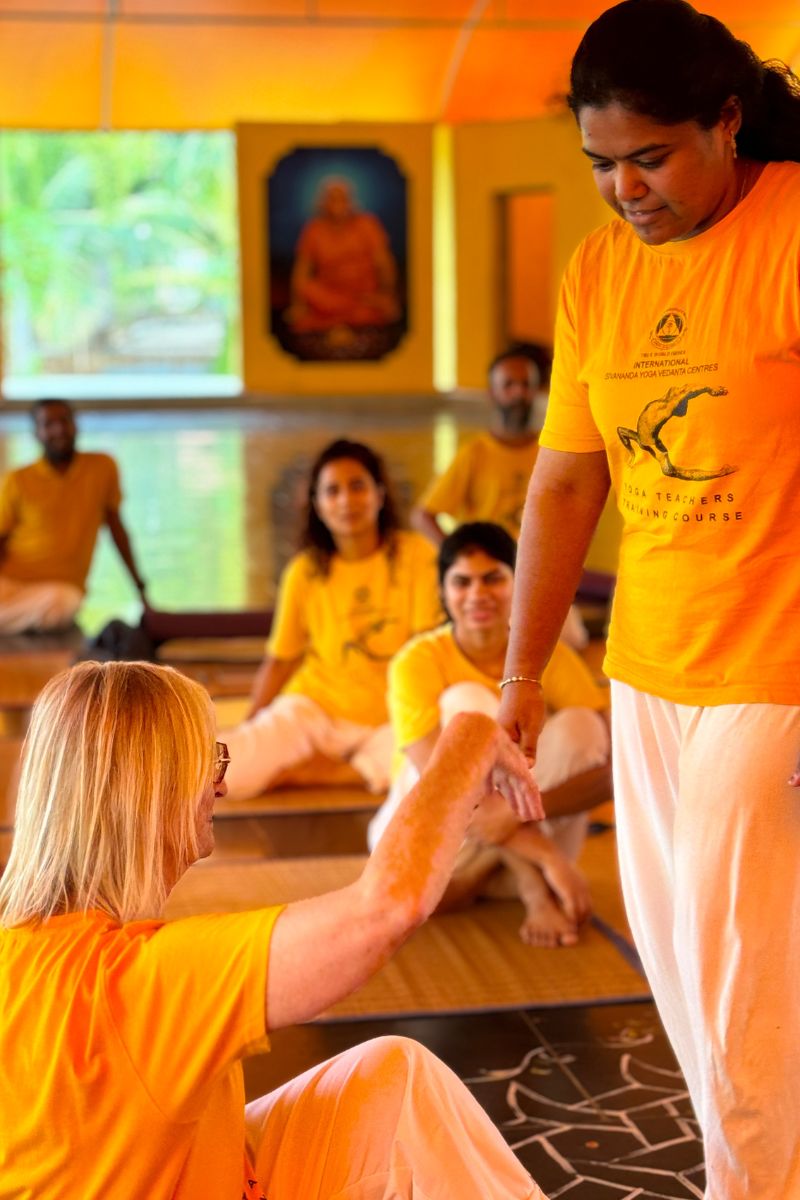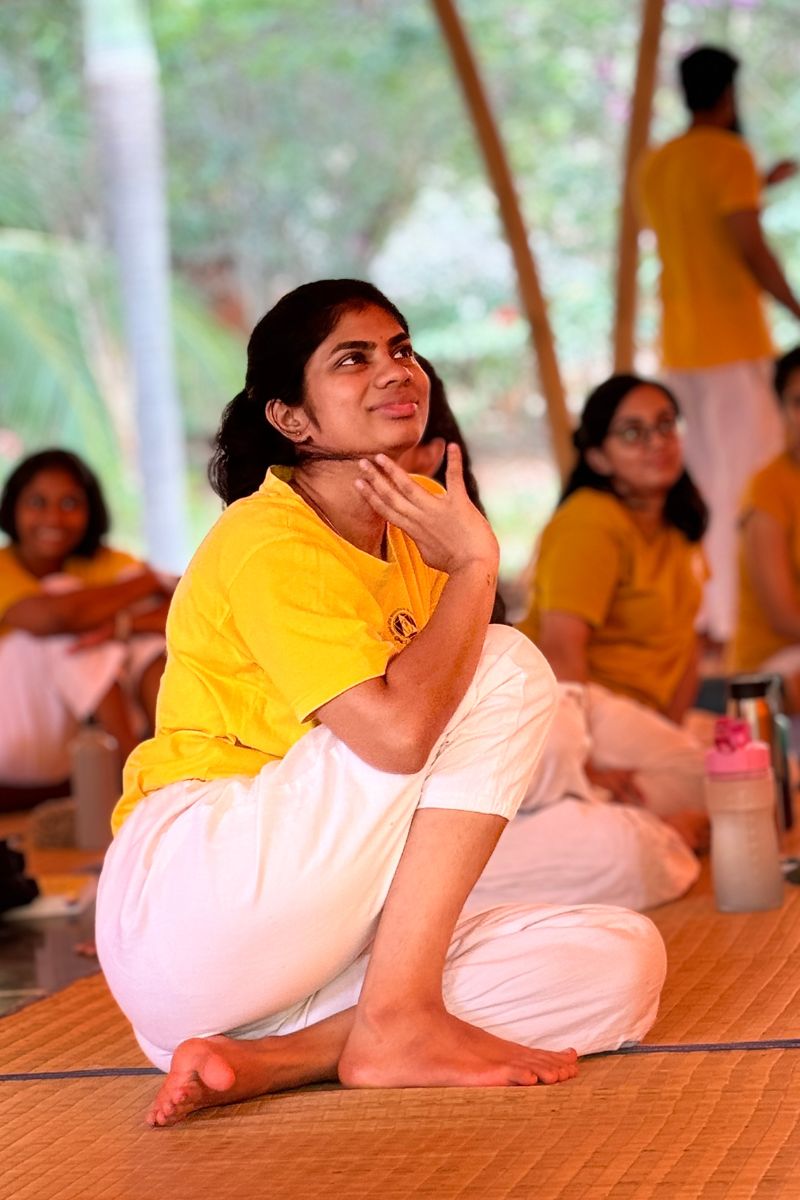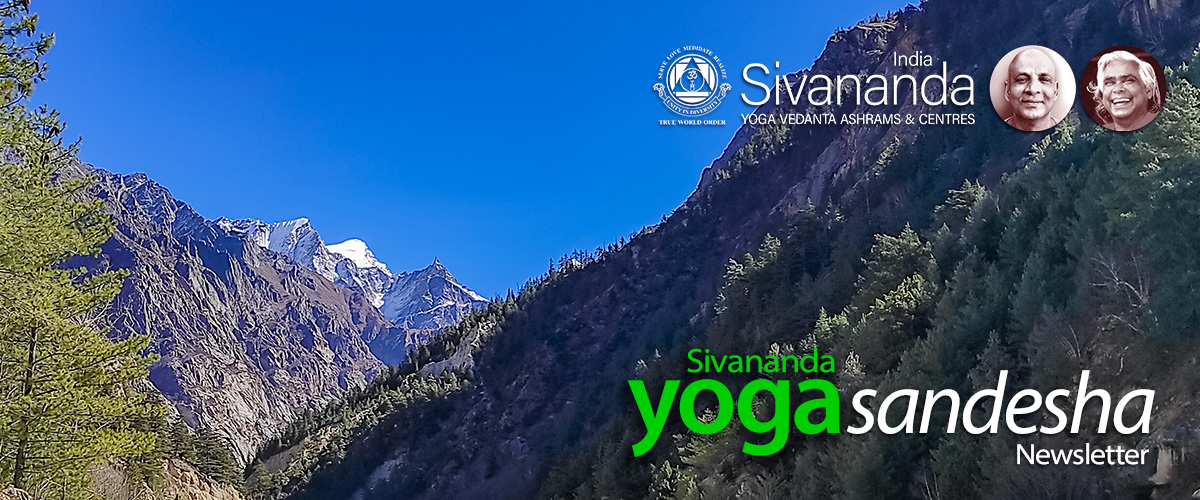
Om Namah Sivaya
Blessed Self,
Greetings to you all. By the grace of Master Swami Sivananda and our Guru Swami Vishnudevananda, we have had a very busy high season in all three ashrams in South India. Our organisation participated in the Global Spirituality Mahotsav in Hyderabad, conducted by India’s Ministry of Cultural Affairs, which brought together leaders from all faiths and spiritual paths for four days of sharing and communion. Swami Vishnudevanandaji’s life mission was dedicated to the message of peace and to bringing all of the world’s religions together, and he did everything possible to make this vision a reality. We are happy that the Indian Government is moving in the direction to bring all religious organizations together.
A complete renovation of the Mahakali Temple in the Madurai Ashram, with a new floor and installing grills all around to make it monkey-proof, will soon transform the temple into a very peaceful abode for many to worship mother Mahakali.
We held an inspiring Teachers’ Training Refresher course at our Madurai Ashram this month. It was interesting to be reminded of how much our TTC graduates appreciate Master and Swamiji’s teachings. Many requested that we conduct this program more often, regularly bringing them back to the source.
Preparations are underway for Kids’ and Teens’ Camps in Neyyar Dam and Madurai Ashrams which are almost completely booked. Our Netala ashram is preparing for its season opening Teachers’ Training Course in April and the ongoing Yoga Vacation program through the whole season. Please do come and visit us.
May Master and Swamiji’s blessings be with you always.
Pranams,
Sivananda Yoga Vedanta Ashrams & Centres, India
Photo credit: רם עמיר, bit.ly/3S1o1bs
One of the niyamas, or observances, or virtuous behaviour of Patanjali’s Ashtanga Yoga (or Raja Yoga) is Swadhyaya which means self-study or study of the scriptures and sacred texts. Self-study and study of the scriptures are essentially the same as all sacred study is about understanding the self. Any important study is of the self. Understanding who we are and what our purpose is, connoting introspection and self-reflection, meditation, and contemplation. Swadhyaya can also refer to the recitation of the Vedas or other sacred texts or mantras.
Sva means one’s own self, the human soul, and adhyaya means lesson, reading, inquiry or examination. Any activity that cultivates self-reflective consciousness can be considered svadhyaya or to intentionally find self-awareness in our activities and efforts. The Tattiriya Upanishad emphasizes importance of swadhyaya in our pursuit of truth, inner peace and meaningful relationships with family, with others, and even with our environment. The practice of swadhyaya can therefore relate to our reflection upon life and the world around us, and our actions arising from this reflection upon truth.
As part of self-reflection we may become aware that we are part of nature. As much as we may reflect upon and draw inspiration from nature, nature is also noticing us and our actions. We tend to think about ourselves as observing, watching, and enjoying nature, however another perspective is that nature is patiently watching us. Nature can teach us to be non-reactive and to let go of any self-destructive tendencies. Nature is, in fact, us. An example of self-reflective action would be Julia ‘Butterfly’ Hill who is known for having lived 738 days high up in the canopy of a 180-foot tall, over 1,000 year-old redwood tree named Luna, to prevent it from being cut down by loggers in the late 1990’s.
Thank you for taking the time to read Sivananda Yoga Sandesha. We hope you enjoy the newsletter and find an opportunity for reflection. As usual, please feel free to reach out to us with your thoughts and feedback: [email protected]
Julia ‘Butterfly’ Hill during her 738 days atop a redwood tree named ‘Luna’
Photo Update:
Mahashivratri at Neyyar Dam Ashram
On March 8 we celebrated Shivratri, or the ‘Night of Siva’ at all of our locations across India. At our Neyyar Dam Ashram it was especially memorable because we had all of our Trustees, Society Members, and Directors in attendance. Please enjoy these photos of the auspicious event.
Photo Update:
Teachers’ Training Refresher Course at Madurai Ashram
From March18 to 23 we conducted our second TTC Refresher Course at the Madurai Ashram. 30 TTC Graduates from around the world gathered to gain a fresh perspective on practice and teaching and to enjoy satsang together. Here are some photos from the classes.
Research/Links
Exposure to Different Kinds of Music Influences How the Brain Interprets Rhythm
A study conducted at MIT and appearing in Nature Human Behaviour suggests that the brain has a bias towards simple rhythm ratios, for example, four beats separated by equal time intervals (1:1:1; often our daily chants in satsang!). However, the study also shows that preferred ratios can vary greatly between societies and cultures with their own distinctive patterns of rhythm. Wonderful things happen when we chant together in satsang, and even more so when we find a common rhythm. Read more here:
news.mit.edu/2024/exposure-different-kinds-music-influences-how-brain-interprets-rhythm-0304
Spiritual Calendar
April 5 – Ekadasi
April 8 – New Moon
April 14 – Vishu (Malayalam New Year)
April 17 – Ramanavami
April 19 – Ekadasi
April 23 – Full Moon
Upcoming Courses:
Learn, Practise & Grow with Us!
Teachers’ Training Course (TTC)
- Apr 7 to May 4, 2024,
Uttarkashi, Himalayas - May 26 to June 22, 2024,
Madurai, Tamil Nadu - June 16 to July 13, 2024,
Uttarkashi, Himalayas
For more details, click here
Advanced Teachers’ Training Course (ATTC)
- May 12 to June 6, 2024,
Uttarkashi, Himalayas
For more details, click here
Sadhana Mandalam
- Aug 1 to Sep 9, 2024,
Neyyar Dam, Kerala
For more details, click here
Sadhana Intensive (SI)
- Oct 16 to 29, 2024,
Uttarkashi, Himalayas
For more details, click here
Teachings Excerpt:
Swadhyaya, by Swami Sivananda
Niyama is the second accessory of Yoga. It is the practice of purity, contentment, mortification, study, and worship. Patanjali Marharishi mentions these five observances under Niyama. According to Sandilya Rishi, Tapas, Santosha, astikya, Dana, Isvara Pujana, Siddhanta Sravana, Hrih, Mati, Japa, and Vrata come under Niyama.
Siddhanta Sravana is the enquiry into the right significance of Vedanta. It is the study and reflection of the nature of Brahman and the right significance of ‘Tat Tvam Asi’ Mahavakya. Hrih is the feeling of shame one experiences when he does certain actions which are not in accordance with the injunctions of the Vedas and rules of society. Mati is the faith in the paths prescribed by the Vedas for the attainment of God-consciousness or Self-realisation. Japa is the repetition of the Mantra into which one is duly initiated by the Guru or spiritual guide and which is not contrary to the rules of the Vedas. Vrata is the regular observane of or refraining from the actions prescribed or prohibited by the Vedas. The practice of Krichara, Chandrayana Vratas come under this heading. Krichara Vrata is fasting for 12 days. The observer of the Vrata drinks only some water. Many sins are destroyed by the practice of this Vrata.
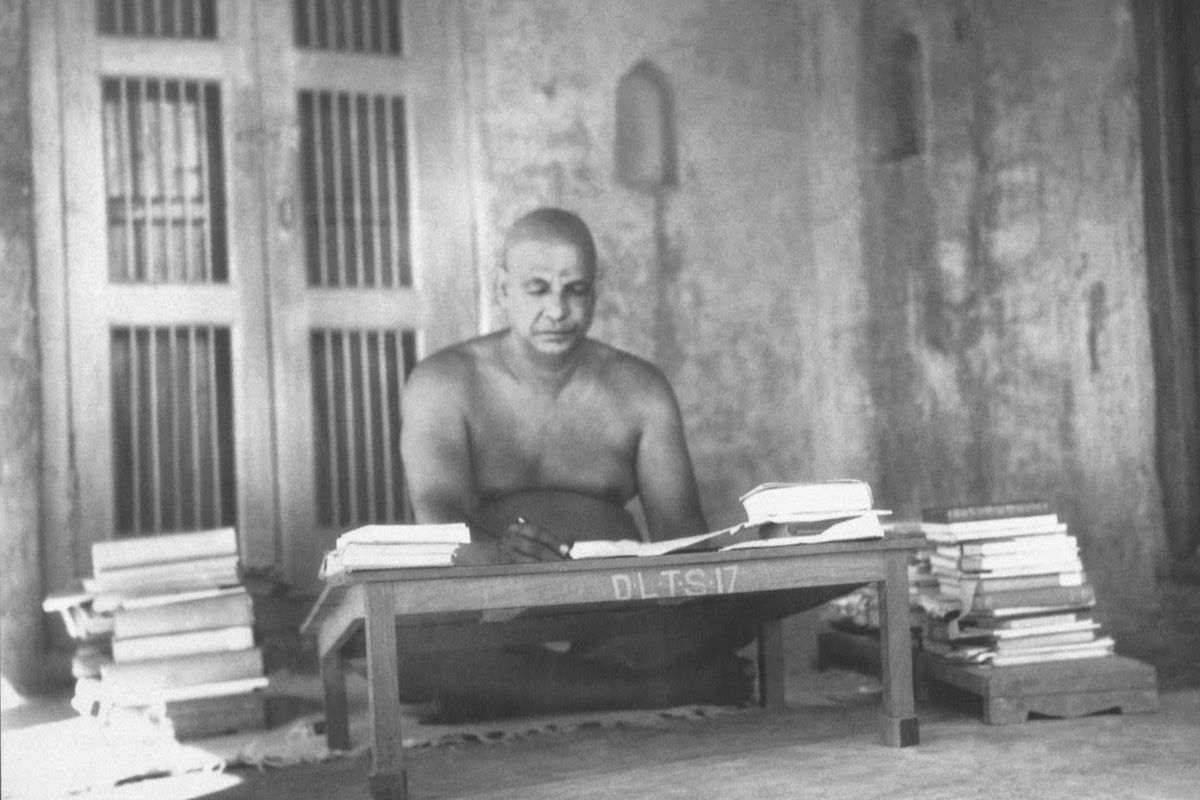
By study of scriptures comes the communion with the tutelary deity. Swadhyaya is the study of scriptures such as the Gita, the Upanishads, the Ramayana, the Bhagavata, etc. The study should be done with concentration. You should understand what you have studied and try to put in your everyday life all that you have learnt. There will be no benefit in your study, if you do not exert to live up to the teachings of the scriptures. Svadhyaya includes also Japa, the repetition of Mantras. By constant study and its practice in daily life will lead one to have communion with God.
Teachings Excerpt:
Meditation and Mantras, by Swami Vishnudevananda
The (Niyamas) observances are (the practice of) internal and external purity, contentment, mortification, study of scriptures, and worship of God or self-surrender. Three of the Niyamas together: Tapas (Austerity), Swadhyaya (Self-study), and Ishwara Pranidhana (Surrender to God) constitute Kriya Yoga. Study of the scriptures and other spiritual works keeps the mind flowing in the desired direction.
YS 2, v. 32 Sauca-samtosa-tapah-svadhayesvara-pranidhanani niyamah
The niyamas consist of cleanliness, contentment, austerity, self-study and self-surrender.
Study of spiritual works and the scriptures helps to keep a person on the right path. Books alone, however, can only take one so far, and can lead to intellectual pride. Surrender to the will of God is necessary, for ultimately everything depends upon His grace.
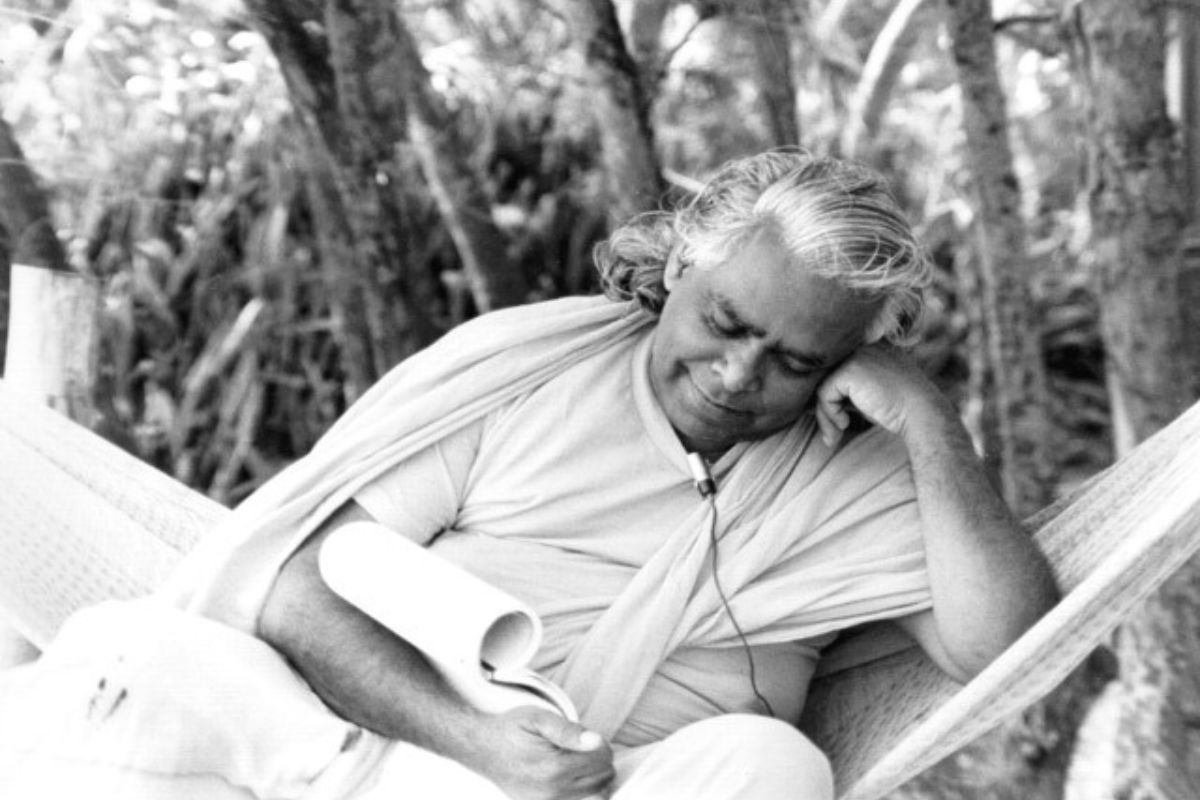
YS 2, v. 44 Svadhyayad ista-devata-samprayogah
Through study that leads to knowledge of the Self comes union with the desired ishta devata.
Intense self-inquiry and study lead one to communion with his personal deity, or ishta devata. However a person conceives of God, that is how he encounters Him. This sutra also alludes to the use of Mantra. Constant repetition of the name of Deity will bring His grace.
Practice and Teaching Tips:
How to Practice Akarna Dhanurasana/Shooting Bow
The Hatha Yoga Pradipika, a text written in the 15th century CE by Swami Svatmarama describes just 10 asanas, and several seated asanas for meditation. Akarna Dhanurasana, called just ‘Dhanurasana’ in the text, is one of the asanas described. Integrating Akarna Dhanurasana into your practice can add some challenge and provide a sense of including one of the very classical asanas of hatha in your sequence.
Akarna Dhanurasana is considered an yogic exercise for the legs, rather than a forward bend. It would ideally be practiced in our sequence after the crow or peacock (hand balancing asana). There are different ways to come into the asana. Here, we show stretching forward and catching hold of the big toes in the classical hand hold. From there we take two different variations. In one, we pull the foot up to the ear on the same side. In the other we cross the wrists and take the foot to the opposite ear. In either case the elbow is pulled back and up, creating a tension and intensity similar to pulling back on a bow before releasing an arrow.
Many students find this asana difficult. If the foot does not come close to the ear you can first try to bring it to the same level or height as the ear. If it is difficult to keep hold of the big toe you can catch hold of the edge of the foot and try the same.
Pro tip: use two fingers to get a stronger grip of the big toe. Be patient and focused, just as an archer would be. Take your time.
Best wishes for your practice. Pranams.
Nutrition Tips:
What Do the Shastras Say About Diet?
Ancient shastras including the Yoga Sutras of Patanjali, the Bhagwad Gita, and the Upanishads emphasize this fact: ‘You are what you eat’. However, the shastras offer a deeper meaning of this statement. Foods, according to the Bhagwad Gita, affect both the body and the mind. It is understood in the shastras that the subtle essence of food rises to have an impact on the mind, impacting one’s emotions and consciousness. Thus, food in the shastras is way beyond nourishment for the physical body and has a huge role to play in redirecting one’s inclination towards spiritual endeavours. This understanding of foods in the shastras is driven by the eternal truth that foods are not just nutrition, but energy that impacts the body and mind.
It is stated in Bhagavad Gita, rather most of the Yoga Shastras, that a diet that imparts the energy of purity, calmness, clarity, and cleanliness, supports the qualities of a reflective mind leading to self-enquiry and self-realization. In Yogic literature, ‘sattva’ is the essence of purity and brings about healing and calmness, thus, a sattvic diet has been propagated in various shastras. A sattvic diet affects the body and mind in a balanced way preparing one for meditative pursuits.
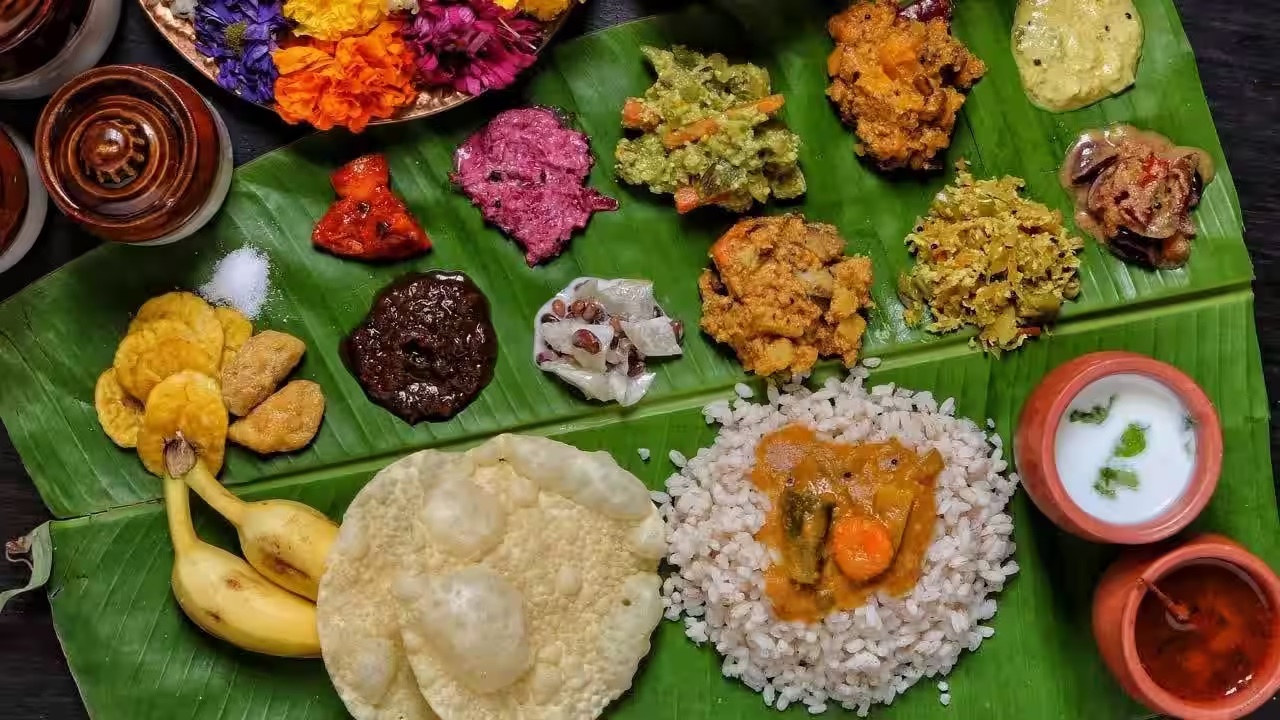
The Three Dominant Energies: According to the shastras, each food carries a specific energy, and this energy has three different forms. The Hindu dietary code revolves around the understanding of three food energies that impact our body and mind differently.
- Tamasic food lacks life force, the positive energy that pushes physical, mental, and spiritual growth. According to the shastras, an excess of tamasic foods lead to a dull and confused state of mind. It fuels negative emotions, such as anger, jealousy, laziness, clumsy behaviour, and greed causing mental disturbances like stress, anxiety, worry and depression. Tamasic foods make digestion heavy and dull causing our agni and willpower to weaken. However, a small amount of tamasic food is necessary to keep all three existing energies in balance to provide stability to the mind in case of high activity and to promote sleep for rejuvenation.
- Rajasic food promotes feelings of passion and restlessness in the mind. According to the shastras, the rajasic energy and excess of tamasic foods may aggravate feelings of overwhelm and the passionate energy that does not know how to express itself. However, small amount of rajasic energy is necessary to keep all three existing energies in balance and to provide stimulation to the mind in case of dullness to promote activity.
- Sattvic energy is the most desirable energy stated in the shastras that promotes feelings of purity, calmness, and well-being. Sattvic foods are non-irritating for digestion and bring clarity to the mind, enhancing one’s spiritual attraction factor.
The Importance of Sattvic Food: The Sattvic diet is of utmost importance in the yogic way of life as it promotes spiritual endeavours and eternal calmness. Here is why the shastras promote a sattvic diet:
- It purifies the thoughts and helps balance emotions. It is good thoughts and balanced emotions that lead to the spiritual path.
- It creates body-mind equilibrium by keeping the body healthy and mind balanced to attain enlightenment.
- It promotes the feelings of purity of heart, longevity, cheerful spirit, strength, sense of joy and eternal happiness.
- It promotes positive vibrations in the mind bringing about clarity of thought and attunes one to the purpose of life.
Location Showcase:
How and Where Have the Vedas Have Been Preserved in India?
The ‘Vedas’ are the primary source of profound infinite knowledge about the existence of mankind. Passed on from generation to generation as a guideline to operate human life in the light of absolute truth and divinity, the Vedas are among the first literary documents that ever existed in mankind. Revealed in the form of sacred sounds and texts, the Vedas are the shabda-brahma, revealing absolute truth in sound. In ancient India, the Vedas served as the source of knowledge in different spheres including astronomy, mathematics, ethics, grammar, law, cosmology, medicine, art, and music.
The Vedas have not been created by any sage or seer, but this knowledge is believed to be eternal and exists in the ethereal space in the form of ‘Shabad’, the sounds that were transcribed by the ancient sages in deep meditative states. Preserved by the Hindus, the custodians of this vast knowledge, the knowledge was passed by the Brahmins to the disciples through the oral recitation of hymns and chants that are thought to replicate the exact sounds that exist in the universe.
How Sages Preserved the Vedas: The Vedas existed before the time the sacred scriptures were engraved on a rock or written in the form of bark manuscripts. The ancient sages devised a unique way of teaching the scriptures revealed from their meditative practices to the disciples. The Vedas are considered as Shruti (that can be heard and recited), and the teachings of the Vedas were passed from a guru to the disciple in the form of oral recitations of hymns and chants. The gurus made the disciples memorise the scriptures with exact pronunciation to maintain the integrity of the Vedic sounds.
Vedic Manuscript Creation and Preservation: The oral Vedic knowledge was transcribed into a manuscript by Adi Shankara for the first time. These manuscripts were only created between 1500 – 500 BCE. The four main Veda texts include Rigveda, Samaveda, Yajurveda, and Atharvaveda with four subdivisions in each Veda. The manuscripts were written in Vedic Sanskrit. Nearly 30 Rigveda transcripts are preserved in Bhandarkar Oriental Institute in Pune, Maharashtra. However, some of the oldest Vedic tablets are held in the British, French, and German museums in safe custody.
Book Review:
The Story of My Life, by Helen Keller
I was quite intrigued to read a book written by a person who could neither see nor hear. Helen Keller learned to read and write with the help of her teacher whom she met at the tender age of seven. She was born a normal healthy child and had started to speak very early. A fever took away her sense of vision and hearing when she was only nineteen months old. Relentless effort from her parents and her teacher Anne Sullivan made it possible for her to communicate through various means. So much so that she could speak, although only her close companions could understand her, and she needed an interpreter for others. She was the first person ever to get a college degree and set an example for many more like her to take up the challenge to express themselves.
When I started reading, I didn’t expect Helen to be an exciting read. I hardly expected the book to have any literary accomplishment. I was probably expecting a world of Helen where she interacts with darkness and silence. I even tried to close my eyes and ears for long durations trying to understand how she must have felt her entire life. Without those senses for some time, I lost my perception of time and space. But when I talked, I could hear myself. And I also knew that my situation was self-induced and temporary, I could get back to my normal senses anytime I wished to. So, it could not have been the same feeling as with Helen. Even then, a few moments without these senses were not comfortable. I found Helen to have very good control over language and vocabulary and could express her feelings in exceptionally wonderful and meaningful ways.
Helen’s book is about her life from the time she started learning with her teacher to the time she was college-educated. I especially loved the second section, which comprises of her letters written to her family, friends, and teacher as a way of expressing herself, as her practice for writing and as a means for us to understand the challenges she faced in her effort to become what she eventually became. These letters show us her growth, both as a student and as a human, and her love and affection for all those who meant so much to her. She liked to interact as a normal person, never to put forward her inabilities.

As I kept reading, I learnt that Helen was describing her surroundings from the perspective of a person with vision and sound. This was confusing, as my mind knew that she was not capable of both. In her own words, “People who think that all sensations reach us through the eye and the ear have expressed surprise that I should notice any difference, except possibly the absence of pavements, between walking in city streets and country roads. They forget that my whole body is alive to the conditions about me. The rumble and roar of the city smite the nerves on my face, and I feel the ceaseless tramp of an unseen multitude, and the dissonant tumult frets my spirit. The grinding of heavy wagons on hard pavements and the monotonous clamour of machinery are all the more torturing to the nerves if one’s attention is not diverted by the panorama that is always present in the noisy streets to people who can see.” This is an interesting observation, as yoga teaches us that we can perceive our surroundings with other means than our sensory organs as we learn to concentrate and not confine ourselves to only our sensory stimuli.
To understand Helen’s writing, we need to closely study what she was reading. Her teacher Anne was her eyes and ears. Her study began with English; slowly progressing to French, Latin and German. This is quite a feat for her condition. She studied English literature, English history, Greek and Roman history, and geography. She could grasp the details of these studies and reproduce them with ease. One who has even a little bit of study of these subjects will find references to many a book, even style of literature reproduced in her writing. It seems like she had this need to express events in colours and descriptive sounds to compensate for her inability. As a reader, I would have loved to look at another perspective, one which is the core of her being. But she never reflected on that in her writing, so we have no way to understand that side of the story. Religious scriptures seem to have put quite an impression on her personality. She refers to the Bible many times, both in the story and in her letters. It shaped her compassion, brevity, and her willingness to help others. There is mention of a story when she donated all the money sent to her by her friends and family for getting a new pet when her pet died; to educate a young deaf and blind boy. By then she was in her teens and had already developed a maturity beyond her age. There are many other occasions when she helped to raise donations for health and education for children with other disabilities.
Her journey to being educated was not a smooth one. “Everyone who wishes to gain true knowledge must climb the hill. Difficulty alone, and since there is no royal road to the summit, I must zigzag it in my way. I slip back many times, I fall, I stand still, I run against the edge of hidden obstacles, I lose my temper and find it again and keep it better. I trudge on, I gain a little, I feel encouraged, I get more eager and climb higher and begin to see the widening horizon. Every struggle is a victory. One more effort and I reach the luminous cloud, the blue depths of the sky, the uplands of my desire.” These words show her struggle, something that anyone can learn from and be encouraged with. I couldn’t find any description of her teacher Anne Sullivan in her story, or her letters other than thanking her a few times. Although she was quite descriptive of many great people she met during that time. So, we don’t get to know much about this person who dedicated her entire life to bringing some meaning to Helen’s life and giving her the gift of reading and writing.
Helen’s story is hugely inspiring for all of us. She was gifted to have been able to come out of her confinement and explore the world around her. I know that this story will help many, irrespective of any physical deformities to achieve higher grounds.
-by Lueit Hazarika,
TTC Graduate
“Be for ever a Mumukshu (a student). He and he alone is an old man who feels that he has learnt enough and has need for no more knowledge.” -Swami Sivananda



